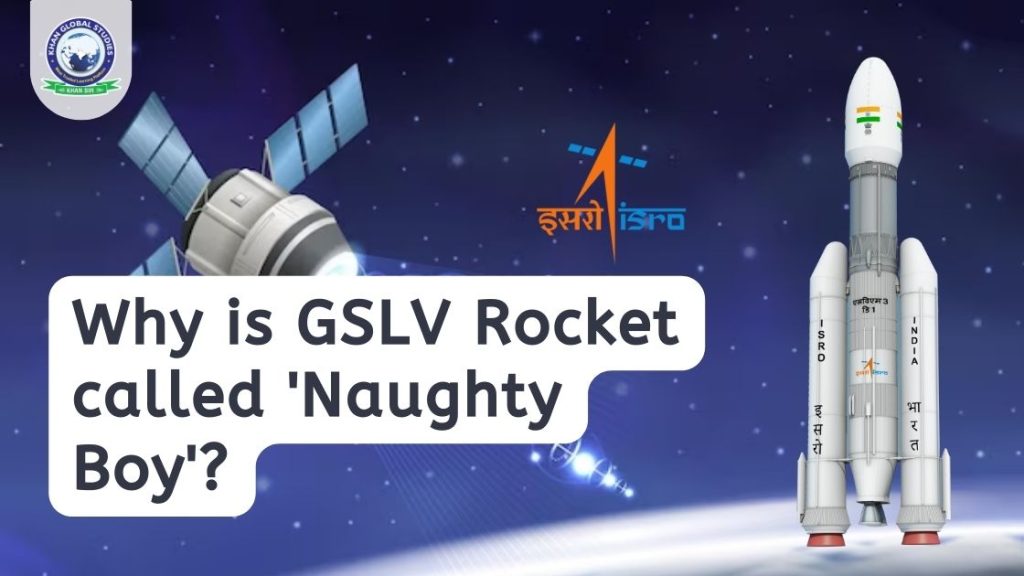The Indian Space Research Organization (ISRO) on Saturday (February 17) launched a new generation weather satellite, INSAT-3DS, which aims to better monitor the Earth’s surface, atmosphere, oceans and environment. INSAT-3DS will enhance the capabilities of the existing two meteorological satellites, INSAT-3D and INSAT-3DR and will boost India’s weather and climate prediction services, early warnings and disaster management services.
But in this launch, the rocket was more the center of attraction than the satellite. The INSAT-3DS satellite was launched on a GSLV-F14 rocket to reach its intended geostationary orbit. GSLV is one of the three main rockets used by ISRO to carry its satellites, the other two being PSLV and LVM III (earlier called GSLV-MkIII). GSLV has had a bit of a poor track record so far, due to which it has been called a ‘naughty boy’. However, on Saturday it performed flawlessly and placed the satellite in the desired orbit.
Why was GSLV known as “Naughty Boy”?
Earlier, the GSLV had flown 15 times and four of these had failed, a very high failure rate for any rocket. The PSLV, the rocket that ISRO has used most often, has failed only twice in its 60 launches, including the first test in 1993. The LVM 3 rocket has flown seven times and never failed.
The most recent failure of the GSLV was in August 2021, when it was attempting to carry the Earth observation satellite EOS-03 into space. Five minutes into the flight, it deviated from the planned trajectory, lost the power to move forward and fell somewhere in the Andaman Sea.
After this, it was successfully launched in May last year, but the uncertainty regarding its performance did not completely end. That’s why Saturday’s launch was monitored more by rocket than satellite.
What is the problem?
The GSLV is a more powerful rocket than the PSLV and can carry heavier satellites. It can carry more than 2,200 kg in geostationary orbits and more than 6,000 kg in low Earth orbits.
Its problems lie primarily with the cryogenic engine that powers the third and final stage of flight. Cryogenics is the science of the behaviour of materials at very low temperatures. Cryogenic engines use liquid hydrogen as the primary fuel. Hydrogen, the most efficient rocket fuel, is very difficult to handle in its natural gaseous form, but it is possible to handle it in the liquid state. However, it liquefies only at very low temperatures, about 250 °C below zero. The oxygen required to burn this fuel must also be in liquid form. Oxygen is in liquid form at approximately 90 °C below zero.
The GSLV uses a cryogenic engine that has been reverse-engineered on a Russian design. Russia won a deal to supply cryogenic engines and technology to ISRO in the late 1980s, but that deal came under pressure from the United States, which claimed it violated provisions of the Missile Technology Control Regime, There is an international legal framework. Stop the spread of missile technology.
In such a situation the deal had to be cancelled. Russia supplied some of their cryogenic engines but could not transfer the technology. India used those engines in some of its launches in the 2000s, and for subsequent flights, attempted to reverse-engineer that engine on its own. It is this reverse-engineered engine, which is used in GSLV rockets, that has created some headaches for ISRO.
What about Indigenous Cryogenic Technology?
Meanwhile, as a result of decades of research and development, India has also managed to develop its cryogenic engine. The design of this engine is completely Indian, developed by ISRO and it uses a different process to burn the fuel. In terms of design, it is close to the Ariane rocket that ISRO used to launch its heavy satellites till a few years ago.
This indigenously developed cryogenic engine is deployed in LVM3, ISRO’s most powerful rocket to date, which carried Chandrayaan-2 and Chandrayaan-3 missions. LVM3 has made seven flights so far without any problems. It is no surprise that ISRO scientists have a better hold on this indigenous technology.
Saturday’s successful launch may have removed the question marks over the GSLV rocket for now, but it will face an even more important test in a few weeks when it will be ready to carry the NISAR (NASA-ISRO Synthetic Aperture Radar) satellite. NISAR, a first-of-its-kind collaboration between ISRO and NASA, will be the most prestigious mission for the GSLV to date.
FAQs
Question: What is GSLV-II?
Answer: Geosynchronous Satellite Launch Vehicle-II (GSLV-II) is an Indian space launch vehicle developed by the Indian Space Research Organization (ISRO). It is designed to place satellites into geostationary orbits and has played a key role in India’s space exploration efforts.
Question: What is Geosynchronous Transfer Orbit (GTO)?
Answer: Geosynchronous transfer orbit (GTO) is a type of geocentric orbit that satellites use as a temporary step to reach their final orbit.
Question: What is a Cryogenic Engine?
Answer: A cryogenic engine is a rocket engine that uses liquefied gases as fuel and oxidizer. The gases are stored at very low temperatures, below -150 °C.
Question: How has been the performance of GSLV-II over the last few years?
Answer: The journey of GSLV-II from its first development flight in 2001 to recent successes shows significant improvements and maturity. Despite facing successive failures in 2006 and 2010, ISRO’s continued efforts in developing and refining the launch vehicle have led it to its current status as a reliable satellite launch vehicle, which has been compared to “matured wine”.






